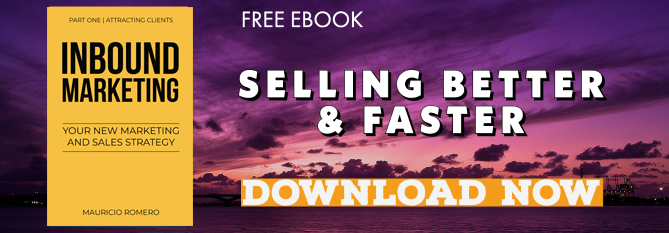 Most business owners make investments in just small tactics or technology like Google Ads, Facebook ads or just a CRM with no results. The problem here is that you need a plan or strategy, not just tactics, techniques or technology. Discover how to make a profitable demand generation marketing strategy.
Most business owners make investments in just small tactics or technology like Google Ads, Facebook ads or just a CRM with no results. The problem here is that you need a plan or strategy, not just tactics, techniques or technology. Discover how to make a profitable demand generation marketing strategy.
Why do you need a demand generation strategy and its importance
Creating demand for your product, service or solution is the most critical factor for the health of your business. You can make a lot of efforts to improve your business, like improving operations, hiring the best talent and training people but, the one that is going to make the most impact in your business is to have a demand generation marketing strategy. Demand generation is the path for businesses to survive and grow.
As an example, what happens to small and medium businesses is that they are really good at what they do, and their talent and capacity to deliver a service or product is not in doubt. But they struggle getting new clients. They don’t have a strategy or plan. When the leads coming from friends and family are over they start to make small marketing efforts. They make a website and social media profiles waiting for leads to come in. It seems that their strategy is called “Hope” and the reality is that you need a lot of effort to get leads coming constantly into your business pipeline.
Having a good marketing demand generation strategy is the one strategy that is going to make the biggest impact in the future of your business. It has to be done right the first time because it consumes a lot of effort, time and budget to create the infrastructure for a lead generation machine. If you don’t solve this for your business, once for all, you are going to struggle like all small businesses forever. So let's start talking about how to do it.
Demand generation vs lead generation
Demand generation is all the activities you make for people who are not interested in your solution, get to know it, understand what it can do for them, position your solution at the right one and then buy from you. This is practically the principle of commercialization that is then divided into two branches, marketing and sales. So a real strategy is to make all sales and marketing activities to play together as a team instead of separate branches.
Demand generation is almost the same as lead generation. The only difference is that lead generation is a further vision where you not only want to get people to know you, but you want a communication channel open with them, to start a conversation. You need a name, email, phone or address. Before, this was not possible because we lacked the technology to record and follow up a big chunk of leads. To personalize the experience for hundreds of customers was out of the question. But now we have the tools.
A lot of businesses don’t have this clear and start to invest in the tools and don’t have clear they need to make their own database of contacts. That is why when businesses owners invest in Facebook or Google ads they end up with lots of fans, likes, shares, visits, CTR and no real leads. So this the most important concept, Is not any more demand generation, you need to start making a lead generation strategy. You need an extra effort for people who showed a little bit of interest in your solution to exchange with you at least an email.
The confusion for making this difference comes from how we used to make advertising.
Traditional marketing tactics vs new
The way we used to attract prospects to our businesses was through traditional advertising. If you really think about advertising it was a technique for passive customers. So what is a passive customer? Is someone that might be one day your customer. Right now he doesn't know you, or need your solution. In order to get your name out there we used to make a compelling message and send it to all the media our wallet could buy and reproduce it as many times we could. Repetition led us to trust and then to the concept of top of mind. So when someone detects they need your solution, your brand is the first that pops into their mind. They already know you, trust you so it is possible they could buy from you.
We don’t work that way any more. When you need to solve something the first thing you do is ask… GOOGLE. Even if you know some brands you want to know all your options and start doing research. What do you want to know? Well… How much does it cost? How was the experience of other customers? What can go wrong with the solution and what guarantees you have? The real strength of a lead generation strategy comes from this trend. This a strategy for active customers. An active customer is someone who detected a problem and is researching for a solution that might become a service or product.
Think about this and start dividing your marketing efforts into passive or active customers. You want to invest your money in people who already are looking for you instead of people who might one day in the uncertain future could be your client. It's nothing wrong with doing both kinds of marketing, but the first one is really expensive and has a lot of spill over, or money you are spending on people that never will be your customer. Why not spend money only on the ones that are looking for your solution. It's going to be more cost effective.
In the space of sales we used to make cold calls, and well we know how they are annoying as a phone user. Then we started to buy email lists and send lots of emails. And now we want the new trend, a CRM that will boost our sales teams. But the tactics are not lined up with a strategy. Again cold calling and cold emails are for passive customers and a CRM is built up for attending active customers. I see a lot of companies invest in technology and now you know why it is not working.
So here are the steps you need to take to make a demand generation strategy that concentrates on leads that are active to buy and get a real follow up from sales teams:
1Strategy before tactics and technology
First you need to understand the principles of what you are trying to achieve. What is most effective and cost effective. Don’t make the mistake of spending a lot of money in software, advertising, social media and paid ads if you don’t know if your budget is for getting your name out there or generating leads that you can nurture. Both strategies are valid, but they are not made for all kinds of businesses.
At Databranding we train marketing and sales teams to understand how this principle works and how they can put them to play together. There is a methodology that we teach because it has a clear process that starts with attracting prospects, converting them into leads, nurture the leads to understand your solution and then close the sale. You put all the tools to work together, a website, blog, forms, social media, CRM, chat, email lists, email marketing, video marketing, audio marketing, content marketing, etc.. This methodology is INBOUND MARKETING.
2 Actionable plan
After understanding what are the goals you should choose the activities you are going to do to get there. This includes 2 major efforts, making an editorial calendar and choosing the channels and technology. We call this part a game plan. The activities your marketing and sales teams are described in the next steps.
3 Attract demand
If we want to attract more active customers we need to start making a lot of content. If people search in Google how to solve a problem, and you do solve that problem you need to start appearing on the results of Google. What kind of content? Well all the questions your prospect has on how to solve what they have in mind. That is why content marketing is a big part of demand and lead generation. People will react and get into your site or blog where the answered questions live. You also need to understand how Google works and choose the best results when you pay them and also without spending on Google ads (We talk about this in other blog). This content become the articles in your blog, the videos, podcast, etc...
4 Prospect conversion to lead conversion
Prospects are in your website, but you need a name and email address to convert them into leads. If you don’t do this all the previous effort is flushed in the toilet. How do you do this? Content, content and more content. You offer your prospects a deeper guide on how to solve the problem, an ebook, a webinar, a course, training, audio, infographic, demo or sales call. You are guiding, educating and providing them with consultancy rather than selling at this stage.
5 Lead nurturing
The next step is to nurture your leads. Why? Only 3% of people are willing to buy right now. But 7% are open to do it really soon. 30% are willing to buy, but not right now they need to think about it. The rest aren't really interested or will never buy from you. So follow up that immediate 3% is what sales teams use to do, and forget the other 37% that could become customers in a short and medium period of time. So you need to send all the answers about the regular questions your leads normally have. You are educating and helping them to advance in their buying decision. With these messages they will contact you, or when they show enough engagement you can call them directly and it won't be a cold call. You build a relationship with them through all the messages based on value and on the vision that you want to help them solve their problem. Great isn't it, no more cold emails or phone calls. Your leads will feel guided not selled.
6 Close and Delight
If all the previous stages are done right the closing of the sale is the natural result of the process. Great you did a new client and sale. But we all know that the most profitable revenue comes from regular clients. They cost less, they know you and it is easier to sell them again. So you have to start a Delight stage.
Again this means sending them regular messages based on value. How they can use better the product you sold them. How they can get the most out of your service. What add ons they can choose to improve the solution. Also send them a congratulations message on their birthday, christmas, hanuka, or whatever date is important for them. You are building a relationship with them and want to be part of their lives.
With these 6 steps you will make a demand and generation machine. Your marketing and sales teams will work together in an aligned strategy, applying the right tactic and media. And most importantly in a cost effective way and with a proven return on investment.
We know you have more questions, feel free to subscribe to our blog to get more ideas and information about demand generation, digital marketing and inbound marketing. Browse our blog that has tons of information about how to do it.
You can also download:

